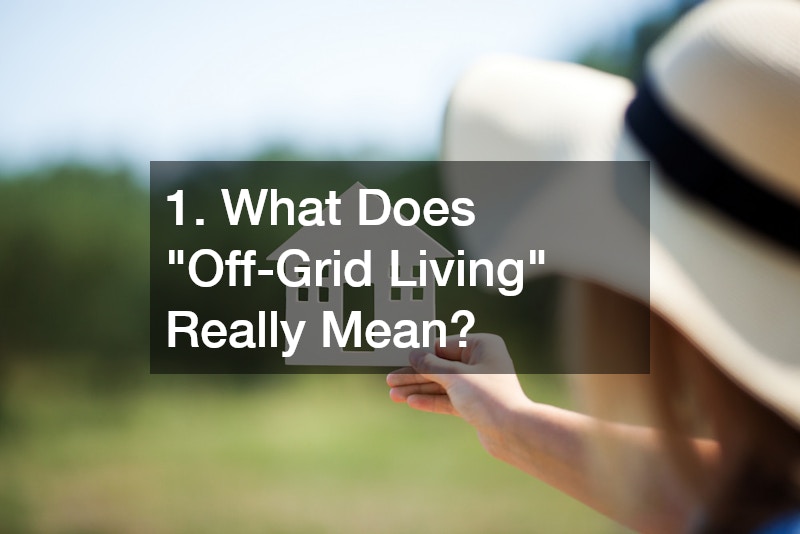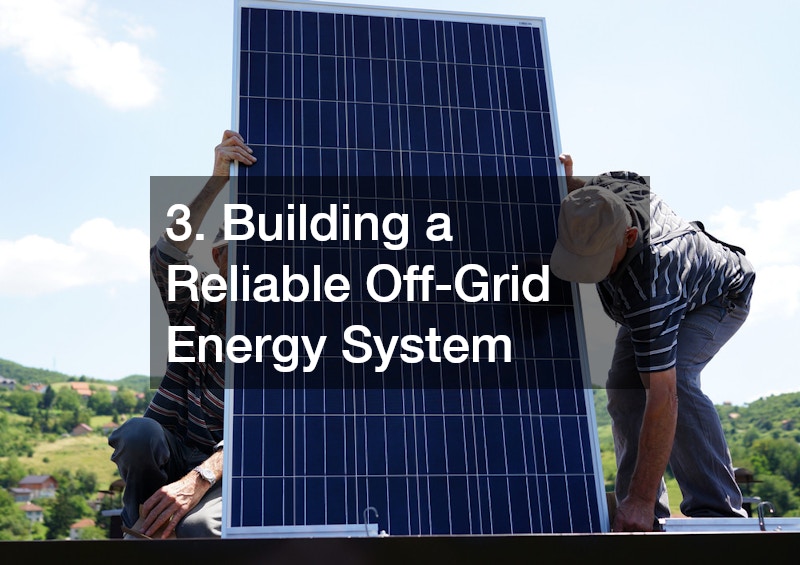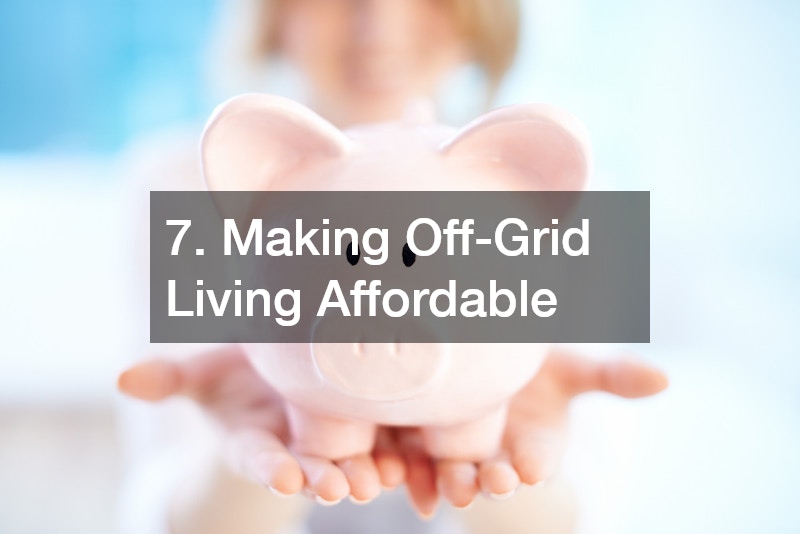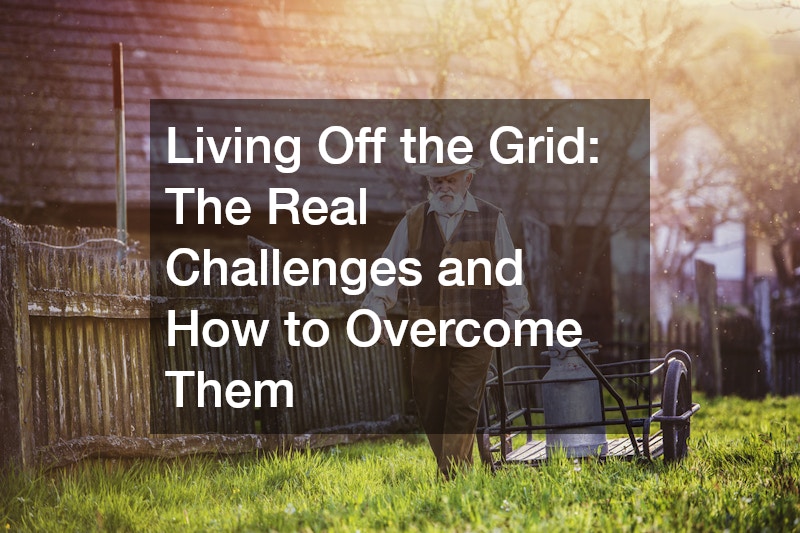Living off the grid is a lifestyle that many people dream of, seeking independence from the traditional systems of energy, water, and food production. It’s an appealing concept for those who want to minimize their environmental impact, live more sustainably, or escape the constraints of modern society.
However, this lifestyle requires careful planning, resourcefulness, and resilience to overcome a variety of challenges. To successfully transition to this way of life, you will need to be prepared with the right off grid essentials, from energy systems to water management tools. In this article, we will explore the real challenges of going off-grid and offer practical tips for overcoming them.
- 1. What Does “Off-Grid Living” Really Mean?
- 2. The Biggest Challenges of Going Off-Grid
- 3. Building a Reliable Off-Grid Energy System
- 4. Managing Water and Waste
- 5. Growing and Preserving Your Own Food
- 6. Navigating Transportation and Mobility
- 7. Making Off-Grid Living Affordable
- 8. Dealing With Legal and Regulatory Hurdles
- In Closing
1. What Does “Off-Grid Living” Really Mean?

Off-grid living refers to a lifestyle where individuals or families live without relying on public utilities for electricity, water, gas, or sewage services. Instead, they create their own systems to meet these basic needs. This way of life is often associated with rural or remote locations, where access to traditional services is limited or unavailable. Off-grid living can be a conscious choice for those seeking independence, sustainability, or a closer connection to nature.
In addition to energy and water, off-grid living can encompass a variety of factors, including waste management, food production, and even transportation. It’s not just about being disconnected from the power grid but also about taking full responsibility for every aspect of daily life, from cooking and heating to maintaining communication and staying informed. Off-grid living is often seen as a commitment to self-sufficiency and a more sustainable lifestyle that minimizes one’s environmental footprint.
2. The Biggest Challenges of Going Off-Grid
While off-grid living is appealing in theory, it comes with its own set of significant challenges. The transition from a conventional, service-based lifestyle to off-grid living requires not just a shift in mindset but also considerable physical and logistical preparation.
Financial Investment and Costs
One of the biggest hurdles when going off-grid is the initial financial investment. Setting up off-grid systems—such as solar panels, wind turbines, water collection systems, and composting toilets—can be expensive. These costs can range from a few thousand dollars for basic systems to tens of thousands for more advanced setups. Additionally, there may be ongoing maintenance and repair costs. For many people, financing these investments can be a significant obstacle.
The cost of maintaining an off-grid home doesn’t stop with energy systems and water management. You may also need to purchase items such as backup generators, tools, and even alternative fuel sources like propane. If you plan to use propane for heating or cooking, it’s important to arrange for regular propane deliveries to keep your supply consistent. This adds to the overall cost of living off the grid, as managing fuel delivery and storage needs requires careful planning and budgeting.
Lack of Immediate Convenience
Another challenge is the loss of the convenience that comes with traditional living. Without access to public utilities, everyday tasks like turning on a tap for water, flipping a switch for light, or dialing a phone for communication become more complex. Off-grid living often requires manual labor, patience, and time to maintain systems and deal with daily tasks. For example, a power outage on the grid might cause minor inconvenience, but for off-grid dwellers, any disruption to their energy system can be a major issue that requires immediate attention.
Isolation and Social Impact
Isolation is a common aspect of off-grid living. Living in remote locations, far from urban centers, can lead to a sense of disconnection from social networks and essential services. For some people, the solitude and separation from community support systems can be difficult to handle. Whether it’s the lack of quick access to medical care, education, or simply the absence of nearby friends and family, the social and psychological impact of isolation can be a real challenge to adapt to. Overcoming this requires creativity in maintaining connections, whether through digital means or organizing local gatherings for off-grid communities.
3. Building a Reliable Off-Grid Energy System

One of the most crucial aspects of off-grid living is energy. Without the grid, you need to produce your own power. The best solution depends on your location, energy needs, and budget.
Solar Power
Solar energy is the most popular and accessible option for off-grid homes. Photovoltaic (PV) panels harness the sun’s energy, converting it into electricity. While the initial setup can be expensive, solar panels are low-maintenance and can last for decades. Solar energy works best in sunny climates, and it’s essential to assess the amount of sunlight your location receives to make sure your system can meet your energy needs.
Wind and Hydropower
Wind turbines and micro-hydro systems are two additional renewable energy sources for off-grid living. Wind turbines can generate power in areas with consistent wind patterns, while micro-hydro systems can harness the flow of water from nearby streams or rivers. These systems may require more specialized knowledge and equipment but can provide a reliable, continuous source of energy in the right conditions.
Battery Storage and Backup Systems
To ensure a continuous power supply, you’ll need an energy storage system. Batteries are used to store excess energy generated during sunny or windy days for use during cloudy periods or at night. A combination of solar panels, wind turbines, and battery storage can provide a balanced and reliable energy system, though it requires careful planning to ensure you have enough storage capacity to meet your needs.
For homes that rely on propane for heating or cooking, a backup energy system is also crucial. While solar power can meet most everyday energy demands, having access to local propane for heating, cooking, or backup power can help maintain comfort during periods when renewable energy sources are insufficient. Many off-grid homes incorporate both renewable energy systems and gas and propane heating services to create a versatile and reliable energy solution, ensuring that they are always prepared for varying conditions and demands.
4. Managing Water and Waste
Off-grid living also means taking responsibility for your own water supply and waste management. This involves creating systems to collect, store, and treat water and wastewater, which can be more complicated than simply turning on a tap and flushing the toilet.
Water Collection and Filtration
In areas without access to municipal water systems, rainwater harvesting is a popular solution. A rainwater collection system uses gutters and downspouts to channel rainwater into storage tanks. This water can then be filtered for drinking, cooking, and bathing. Depending on your location, you may need additional filtration systems to ensure the water is safe for consumption, particularly if you live in an area where rainfall is sparse or irregular.
For those living near a natural water source, such as a river, stream, or well, using a water pump can be an effective way to draw water. Water well pumps are commonly used to extract water from deep underground sources, ensuring a steady water supply. However, drilling a well requires professional help, so many off-grid homeowners turn to well drilling services to get the job done. It’s crucial to test and treat this water before use to ensure it’s free of contaminants, as untreated water can pose health risks.
Waste Management
Managing waste, both human and household, is another important challenge. Composting toilets are a common solution for off-grid homes. These toilets use little to no water and break down waste into compost, which can be used in gardens. Alternatively, some off-grid dwellers rely on septic systems, though these require more maintenance and may be subject to local regulations.
Household waste, including trash and recyclables, needs to be disposed of responsibly. Some off-gridders reduce their waste by recycling, composting organic matter, and using minimal packaging. Others may burn or bury their waste, but it’s important to understand local laws regarding waste disposal to avoid legal complications.
5. Growing and Preserving Your Own Food

Growing your own food is a key aspect of off-grid living, reducing reliance on external food sources and providing a sense of self-sufficiency. However, it also presents its own set of challenges, from land preparation to pest management.
Gardening and Crop Planning
To grow food successfully, you need fertile land, proper tools, and knowledge of gardening techniques. Planning your crops according to the climate and season is crucial. You can grow a variety of fruits, vegetables, and herbs, but your garden should be large enough to meet your needs. Many off-gridders also grow their own seeds to make sure they are self-sufficient for the next growing season.
Companion planting, which involves planting certain crops together to promote growth or deter pests, can help reduce the need for chemical pesticides. It’s also important to rotate crops to maintain soil health and prevent the depletion of essential nutrients.
Preservation and Storage
Once your crops are harvested, preserving food is essential to ensure you have enough to last through the winter or dry seasons. Methods such as canning, freezing, drying, and fermenting can help you store food long-term. Off-grid dwellers often rely on root cellars or cool storage areas to keep produce fresh.
Food preservation requires time and effort, but it’s one of the most rewarding aspects of off-grid living, as it allows you to eat food that you’ve grown yourself, free from preservatives and chemicals.
6. Navigating Transportation and Mobility
While living off the grid provides more independence, it can also create challenges when it comes to transportation. In rural or remote areas, public transportation may be non-existent, and traveling long distances may require special planning and extra time.
Vehicle Considerations
If you live far from civilization, you may need a reliable vehicle capable of handling rough roads or long distances. Many off-gridders choose trucks, four-wheel-drive vehicles, or RVs to navigate challenging terrain. However, maintaining these vehicles can be costly, especially in isolated areas where repair shops are scarce. Regular vehicle maintenance is essential, and without access to convenient repair services, you’ll need to be prepared for basic repairs and maintenance yourself.
Fuel costs are another factor to consider. Off-grid living often involves more driving than living in urban areas, especially when you need to travel for supplies, medical care, or social activities. Fuel-efficient vehicles or alternative fuel sources, like biodiesel, are options worth exploring to reduce costs.
Alternative Transportation Options
For short-distance travel, especially on your own property, alternative modes of transportation can be highly practical. Electric bikes, ATVs, or even golf carts are popular choices for navigating large off-grid properties. A used golf cart, for example, offers a cost-effective way to get around without the fuel costs associated with traditional vehicles. However, ensuring these vehicles remain in good working condition means committing to regular maintenance. Whether it’s checking the battery, tires, or electrical system, golf cart maintenance is vital to ensure the vehicle serves its purpose over time. Having backup batteries or parts on hand can also help minimize disruptions to your mobility, keeping you independent and prepared for any situation.
7. Making Off-Grid Living Affordable

While off-grid living offers the promise of reduced utility bills and greater independence, it also comes with its own financial challenges. The upfront cost of setting up off-grid systems can be significant, but there are ways to make it more affordable.
DIY and Self-Sufficiency
One of the best ways to reduce costs is to embrace DIY methods. By learning how to build and maintain your own systems, you can save a significant amount of money. Many off-grid dwellers build their own solar panels, water collection systems, and even tiny homes. There are plenty of online resources and communities where you can find guides and tutorials for building your own systems.
Furthermore, bartering and trading goods or services with neighbors or other off-grid dwellers can reduce the need for money. For example, you could trade surplus food from your garden for other supplies or services. Another way to free up extra cash for off-grid investments is by selling unwanted valuables. If you have items like gold jewelry you no longer need, selling gold can be a viable option to help fund your off-grid lifestyle.
Exploring Financing Options
While DIY methods and bartering can reduce costs, there may still be instances where additional financial support is necessary. In such cases, consider exploring alternative financing options. A personal loan company may be able to offer affordable loans that could help cover the costs of necessary off-grid systems, like solar panels or water filtration setups. Be sure to compare interest rates and terms to ensure you’re getting the best deal. Whether through a personal loan or selling gold, creative financial strategies can make off-grid living more accessible.
8. Dealing With Legal and Regulatory Hurdles
While off-grid living can provide a sense of freedom, it’s important to be aware of the legal and regulatory challenges that may arise. From building codes to water rights, off-grid living is subject to local laws and regulations.
Zoning and Building Codes
Before you start building an off-grid home, you’ll need to check the zoning laws in your area. Some regions have strict building codes that may prevent you from constructing a home without access to utilities. Moreover, certain areas may require permits for renewable energy systems, water collection, or waste management. It’s essential to research local regulations and obtain the necessary permits before starting your off-grid journey.
Water and Land Rights
Water rights can also be a complex issue, particularly if you plan to use a well or natural water source. In some regions, access to water is regulated, and you may need to apply for permits or pay fees for using water from streams, rivers, or underground sources. Similarly, if you plan to grow crops or build structures on your land, you need to understand property rights and ensure that you are not violating any local laws. If you find yourself unsure about your rights or facing disputes over water or land use, consult an attorney to help you understand the laws and stay compliant with local regulations.
In Closing
Off-grid living offers a rewarding and sustainable lifestyle, but it requires careful planning, hard work, and adaptability. By understanding the challenges and taking proactive steps to overcome them, you can enjoy the freedom and independence that comes with living off the grid while minimizing the obstacles along the way. Whether you’re interested in reducing your environmental impact, seeking self-sufficiency, or simply enjoying a quieter, more peaceful way of life, the off-grid lifestyle can be a deeply fulfilling experience.
